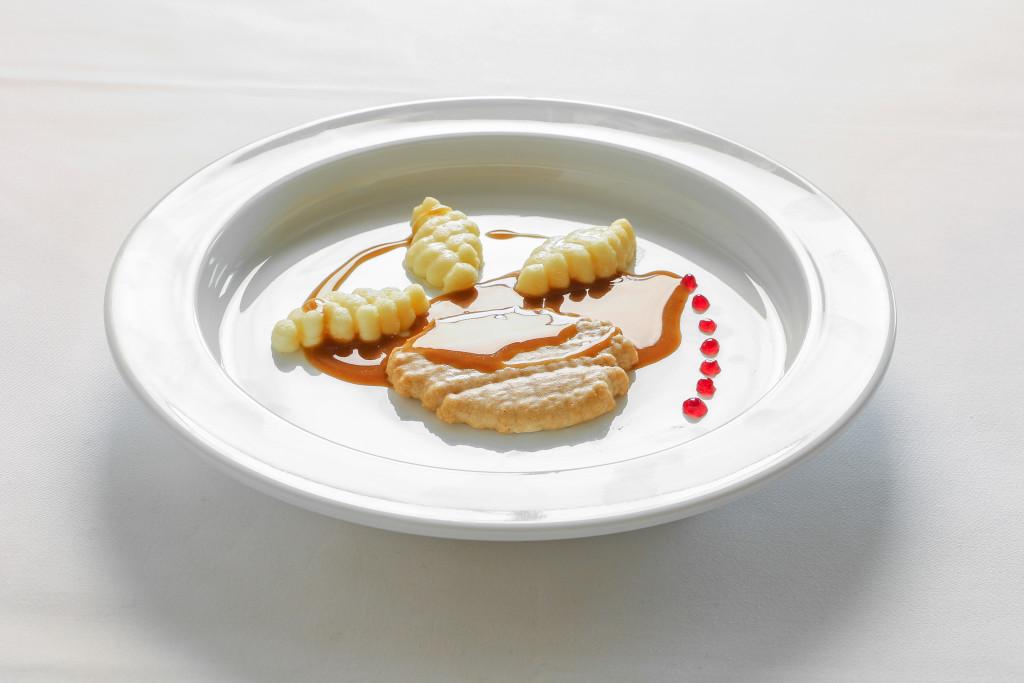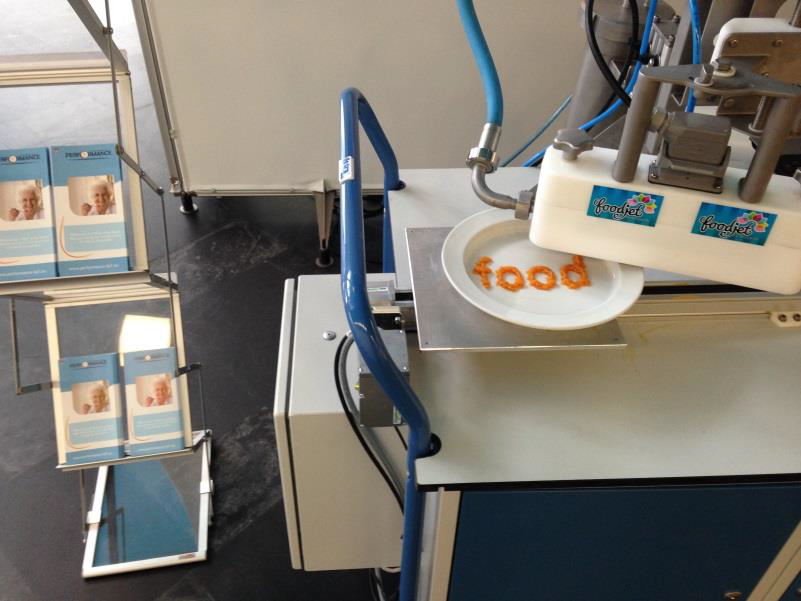Near the peak of food 3D printing hype, circa 2014, one European project garnered a good deal of attention for its exciting work in food fabrication The PERFORMANCE project, which began in January 2012 and last for three years after, sought to develop food 3D printing technology in order to serve the one in five Europeans suffering from dysphagia, chewing and swallowing difficulties.
Though the project was a unique one, which paired with interesting images of food items made by project leader Biozoon, the end result of the PERFORMANCE never seemed quite clear. To learn more, we reached out to Matthias Kück, owner of Biozoon, and Pascal de Grood, Director of FoodJet, one of the primary industrial partners in the initiative.
From an outside perspective, the partnership between Biozoon and FoodJet seemed like an obvious one for tackling the swallowing problems of over 10 million elderly people in Europe. On the one hand, Biozoon is a specialist food company that makes products for use in molecular gastronomy, elderly care and sports drinks and gels. This includes texturizers used to make soft foods more appealing for nursing home residents. FoodJet, on the other hand, is a manufacturer of large-scale, industrial food jetting systems, used for decorating and filling a wide range of foods, from frosting on donuts to sauce on pizza.
To achieve its goal of an industrial food 3D printing technology for people with dysphagia, Biozoon developed a specific food powder formulation to solidify purees. Kück explained that the challenge was to create a gelling agent that starts solidifying within three seconds, from the time that the liquid food leaves the print head and lands on the plate before subsequent layers are printed.
“If it solidifies too fast, one gets the effect of laminated dough. If it’s to slow, the second layer destroys the first layer,” Kück said.
For its part, FoodJet had been performing something akin to food 3D printing since 2004 or 2005 but chose not to refer to it as such so as not to conflate its industrial scale technology with the small chocolate 3D printers that are on the market. The process looks like a giant inkjet printer, in which the ink has been replaced with viscous, edible ingredients.
Whereas other large food deposition processes usually involve a single pass below a deposition head, FoodJet is capable of printing several layers on top of each other, with multiple colors and a high degree of accuracy. While this gives the company an edge in the industrial food business, printing up a large number of layers is still difficult.
In addition to the issue of building up many layers, the PERFORMANCE team worked to overcome the organic nature of food.
The printing process relies on digital files, but, Kück pointed out, “Food is a natural product; it is never homogeneous. We experienced differences in printing whether a cauliflower came from Germany, Italy or Poland. Also, the quality played a role: low-cost frozen vegetable has a much higher water content, than organic quality food.”
The partners did create an industrial prototype, but, in the end, decided that the technology was not ready at an industrial scale and a business case could not be made to develop it further.
“Unfortunately the business model did not really translate into a business case for FoodJet to develop that particular machine, which was relatively low capacity and also provided relatively low added value to the products that were made,” de Grood said.
Nevertheless, the PERFORMANCE project did inform some subsequent work. For instance, Prtin2Taste GmbH was spun out to commercialize the Procusini brand of small food extrusion 3D printers. Meanwhile, FoodJet has commercialized a food 3D printing system specifically for industrial scale chocolate 3D printing. We will follow up this story with more on FoodJet’s unique chocolate printing technology in a subsequent article.
Customized, easily digestible foods for seniors may not be around the corner, but the technology is there. In the meantime, Biozoon still manufactures texturizers for solidifying liquified foods and those with a sweet tooth may be able to order custom, 3D-printed chocolates within the next couple of years.
Subscribe to Our Email Newsletter
Stay up-to-date on all the latest news from the 3D printing industry and receive information and offers from third party vendors.
Print Services
Upload your 3D Models and get them printed quickly and efficiently.
You May Also Like
U.S. Navy Lab Uses 3D Printing to Reduce Tooling Lead Time By Over 90%
The F-35 Lightning II Joint Program Office (JPO), responsible for life-cycle management of the key fifth-generation joint strike fighter (JSF) system used by the U.S., its allies, and its partners,...
Etsy Design Rule Change Reduces Selection of 3D Printed Goods
Online marketplace Etsy has implemented a rule change requiring all 3D printed goods on the site to be original designs. The update to the site’s Creativity Standards states, ¨Items produced using...
Honeywell Qualifies 6K Additive’s Nickel 718 for 3D Printed Aerospace & Defense Parts
6K Additive is renowned for manufacturing sustainable additive manufacturing (AM) powder, and offers a wide portfolio of premium metal and alloy powders that include titanium, copper, stainless steel, and nickel,...
MetalWorm Sells WAAM Systems to Research Institutes in Brazil and Malaysia
Turkish WAAM firm MetalWorm has sold a system in Malaysia and another in Brazil. This is an excellent example of a few emerging trends in additive. Firstly, WAAM was experimented...



































